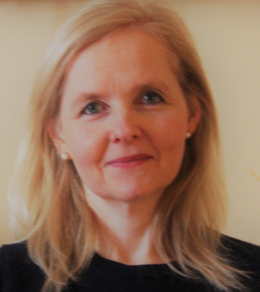LONDON, England — In an interview with Cyril de la Noue, The Borgen Project looks at how a student-led initiative, the Ghana Educational Collaborative, effectively helped continue providing education for children in Ghana despite COVID-19 lockdowns.
Founding of the Ghana Educational Collaborative
De la Noue co-founded the Ghana Educational Collaborative with Ayo and Yani Ince. The organization helped provide education for children in Ghana by creating educational videos for students of the Divine Kids Academy in the Ghanaian village of Jukwa, who could not attend school due to pandemic restrictions.
Prior to the pandemic, the other two co-founders had traveled to Jukwa and met the director of the Academy. It was this personal connection that brought the project to life. The founders kept in touch with the director, and when COVID-19 lockdowns hit the nation, the Ghana Educational Collaborative decided to bring its mission online to ensure that the students could continue to learn.
It was an international team effort providing multi-disciplinary support; as de la Noue told The Borgen Project, “[the Ghana Educational Collaborative]had members worldwide joining in with this project and we were able to teach a variety of classes, from STEM with mathematics, science and computer science to languages with English, French and mandarin.”
Using Virtual Means to Provide Education for Children in Ghana
As the project took place during the lockdown, the members of the Ghana Educational Collaborative used the shift to virtual work to their advantage. As de la Noue explains, because “the group was made up of high school students from all over the world, all our work had to be done remotely and at suitable times for everyone […] Since most members were in lockdown, it was much easier to have everyone join the calls and everyone was used to working online.”
At first, de la Noue explains, the co-founders had to calculate how to organize Zoom calls that worked across time differences. He notes that the teamwork and dedication from every member, however, helped the project run smoothly. “Everyone was really invested in the project, which made it so much easier to organize.”
After making the educational videos, the members sent the videos to their correspondent at the Academy, who would then either present the videos in front of the classes or send the videos to the students’ families, depending on the lockdown situation.
Measuring Success
De la Noue recalls that, at first, the Ghana Educational Collaborative received no feedback, but it still continued to produce videos. When the feedback arrived, however, it was very positive and pushed the members to continue their work.
As de la Noue says the Ghana Educational Collaborative received an update from the director of Divine Kids Academy with videos and photographs of students watching the videos and making notes. In fact, even the town policeman used the Ghana Educational Collaborative’s videos for his children’s learning.
“The positive feedback really motivated us to keep working on these videos and it was very rewarding to know that we were helping these students who went through a really hard time during this pandemic,” de la Noue says.
Indeed, seeing this positive impact is one of De la Noue’s favorite parts of working with the initiative providing education for children in Ghana. Parents of many students sent collaborative messages to show their appreciation for the videos, which de la Noue says was “very touching and a huge motivation” to continue to help provide education for children in Ghana.
Rates of Poverty and Education for Children in Ghana
According to UNICEF, as of 2020, only 47% of Ghanaian children completed lower secondary school due to high dropout rates, repetition or delayed completion. Jukwa is in the Central Region of Ghana, which is geographically in the south of the country. Although Southern Ghana has higher secondary school completion rates compared to the north, only about 29% of children in the Central Region complete upper secondary school. UNICEF continues to help provide education for children in Ghana.
The largest fall in poverty in Ghana followed the state’s democratization period between 1991 and 2012 when poverty rates decreased by nearly 75% from 47.4% to 12% in 2012. At 12%, Ghana’s 2012 poverty rate placed the nation below the average poverty rate of sub-Saharan African countries and lower-middle income countries.
Between 2012 and 2016, however, regional differences in labor types led to differing trends between regions. As southern regions switched “from agriculture to private wage employment and non-agricultural self-employment,” these areas noted high poverty reduction rates, the World Bank says. In the rural northern regions, however, poverty increased, bringing the average rate of poverty in Ghana up to 13.3% in 2016.
COVID-19 significantly impacted Ghana. The poverty levels of households facing unemployment due to the pandemic increased by 55.7% and their living standards decreased significantly as well. Similarly to global trends, the pandemic’s effects hit female-led households more severely. In 2020, the poverty rate reached 25.5%, up by half a percent compared to 2019. Nonetheless, the economy began recovering in 2021 and the World Bank projects economic growth of 5.5% in 2022. Although inflation increased due to the Ukraine war, “strong domestic demand” and higher export prices provide a positive outlook for the nation.
The Importance of Education and Reducing Poverty in Ghana
The Ghana Educational Collaborative helped provide a quality education for children in Ghana through virtual means. Education is a crucial tool that helps countries reduce poverty levels and UNICEF continues to work with Ghana to increase school completion rates. Rates of poverty in Ghana increased post-pandemic, but the nation is on the path toward economic recovery.
– Elena Sofia Massacesi
Photo: Flickr















